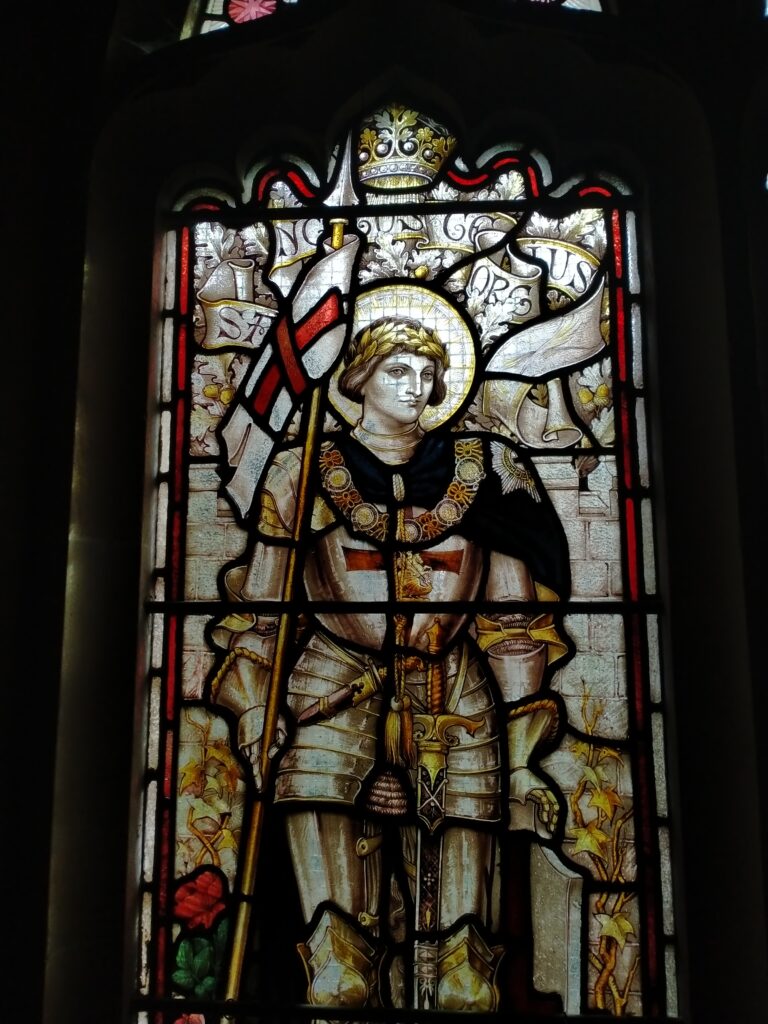By Tim Lambert
St George is, of course, the patron saint of England. ‘Cry God for Harry, England, and Saint George!’ Those immortal words are from Shakespeare’s Henry V, but who was St George and how did he become the patron saint of England? St George was a Roman soldier who lived in the 3rd century AD. He was probably born in what is now Turkey. At the end of the century, Emperor Diocletian persecuted Christians, and St George was martyred in 303 AD. George was canonised (declared a saint) in 494.
St George was popular with the Crusaders because he was a soldier. He is supposed to have appeared to them at Antioch in 1098.
St Georges Day, 23 April, was set by the Synod of Oxford in England in 1222.
In the Middle Ages, the legend of St George and the dragon became popular. (The legend is believed to represent the fight between good and evil).
Meanwhile, he was growing in popularity in England. By the 14th century, St George was seen as England’s saint.
Guilds of St George
In the Middle Ages, some people formed religious guilds. They prayed for the dead members’ souls and provided charity. Many were dedicated to St George. On St George’s Day in many places, effigies of St George were taken out of the local church and paraded around the parish.
However, after the Reformation, the cult of the saints was swept away in England, and St George lost much of his importance. Unlike many national saints, St George has been neglected. However, recently, St George’s Day has been revived.
In 1940 King George VI created the George Cross Medal for acts of great bravery by civilians. It bears an image of St George and the dragon.
St George is also the patron saint of Catalonia. And he is the patron saint of Ethiopia. St George is also the patron saint of Portugal. And he is the patron saint of scouting.

A stained glass window of St George in Blendworth, Hampshire
Last revised 2025